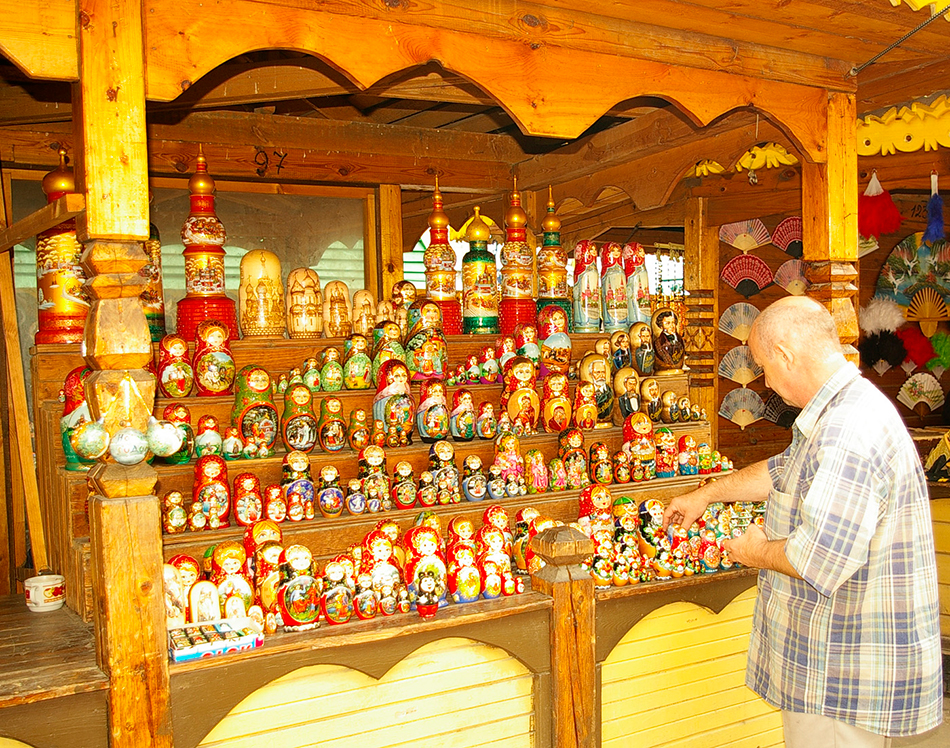Matryoshka Dolls – The ‘Mother’ of Russian Nesting Dolls
Colorful and somewhat imposing, giant Matryoskha dolls are a cultural and artistic representation of a traditional art form in Russia. The Matryoshka doll also known as Russian nesting/nested doll, refers to a set of wooden dolls of decreasing size placed one inside the other.
In provincial Russia before the revolution the name Matryona or Matriyosha was a very popular female name which means mother. This name was associated with the image of a mother of a big family who was very healthy and had a portly figure. It became a symbolic name and was used specially to describe brightly painted wooden dolls made in such a way that they could be taken apart to reveal smaller dolls fitting inside one another.
The first Matryoshka
The first Russian nested doll set was carved in 1890 by Vasily Zvyozdochkin from a design by Sergey Malyutin, who was a folk crafts painter at Abramtsevo.
Traditionally the outer layer is a woman, dressed in a sarafan, a long and shapeless traditional Russian peasant jumper dress. The figures inside may be of either gender; the smallest, innermost doll is typically a baby turned from a single piece of wood. Much of the artistry is in the painting of each doll, which can be very elaborate.
Matryoshka dolls are often designed to follow a particular theme, for instance peasant girls in traditional dress, but the theme can be anything, from fairy tale characters to Soviet leaders.
A Modern Twist
Modern artists create many new styles of nesting dolls. Common themes include floral, Christmas, Easter, religious, animal collections, portraits and caricatures of famous politicians, musicians, athletes, astronauts, “robots” and popular movie stars.
The Giants
Shown below is from the exhibition of giant Russian dolls. The dolls represented Russia at the Russian National Exhibition in Paris in 2010. Now the dolls are presented at the Afimall City complex in Moscow.
Workmanship
The basic technique of nesting doll making remains unchanged. As a rule nesting dolls are made from lime, birch, alder and aspen. Lime is the most abundant material. The trees chosen to manufacture nesting dolls are cut down at the beginning of Spring, usually in April when the trees are full of sap. The felled trees are stripped of their bark leaving a few rings to prevent the wood from cracking. The logs prepared in this way with their butt-ends smeared over are arranged in piles with a clearance between them to allow aeration.
The logs are kept in the open air for two years. Only an experienced master can tell when the material is ready. Then the logs are cut into workpieces for nesting dolls. Every workpiece can be turned as many as 15 times before the nesting doll will be ready.

Russian nesting dolls are the embodiment of Russian folk art culture!












